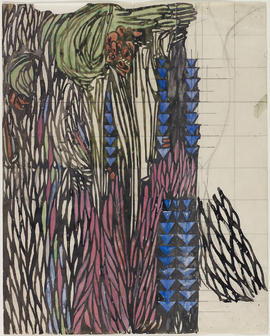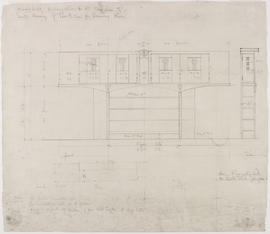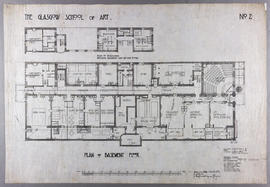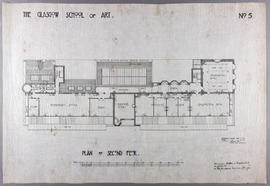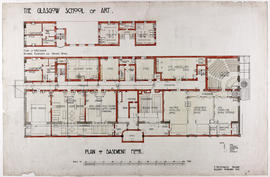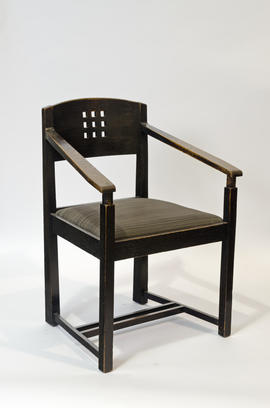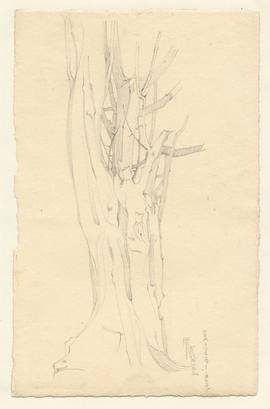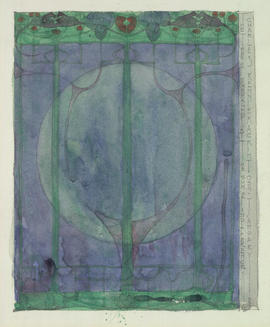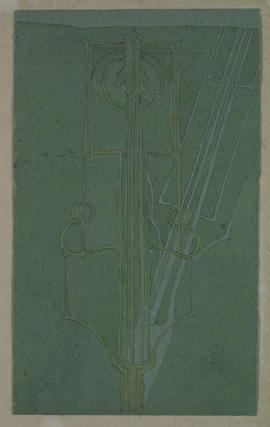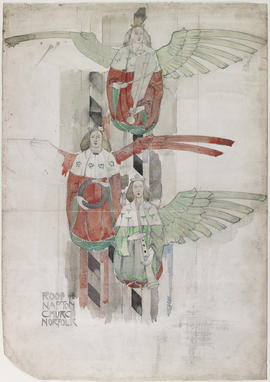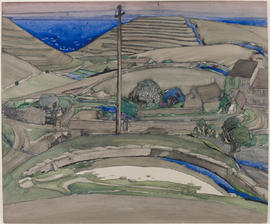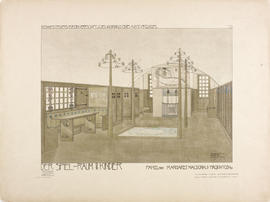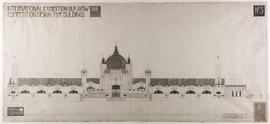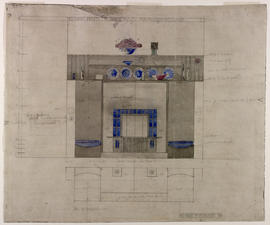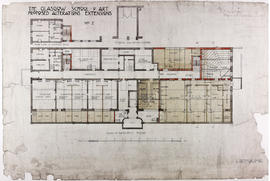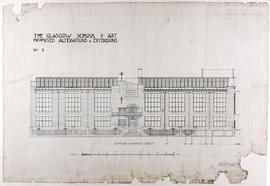Design for The Hill House, Helensburgh, perspective from south-west
- MC/G/42
- Item
- 1903
Design for Walter Blackie. 'When in 1902, Walter W Blackie, the publisher, decided to have a new house built on a site he had acquired overlooking the Firth of Clyde, he asked Talwin Morris, the art manager of his firm, for advice in the choice of an architect. Morris had no hesitation in recommending Mackintosh and when Blackie met him they found themselves very much in sympathy with each other. This happy relationship between clients and architect resulted in the largest and perhaps finest example of Mackintosh's executed domestic architecture.' (McLaren Young). The house survives in good condition and still containing much of the furniture which Mackintosh designed for it. The plan is similar to his design for Haus Eines Kunstfreundes, and the schemes for decoration and furnishings throughout the house were executed according to his designs.
Mackintosh, Charles Rennie


